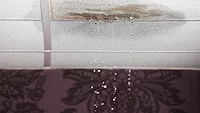Interstate Restoration Increases Detroit-Area Resources Ahead of Potential for Burst Pipes, Flooding

Interstate Restoration, one of North America’s leading disaster-recovery companies, is responding to a large influx of calls for burst pipes across the greater Detroit area as a result of recent extreme Arctic air. The company has also been mobilizing staff, contractors, temporary labor and equipment to meet the demand for restoration services as more burst pipes are expected during next week’s thaw.
“We’ve deployed hundreds to respond to the more than 40 calls from schools, businesses, apartment buildings and hospitals concerning frozen or burst pipes in the last week of January,” said Jeff Levine, regional vice president for Interstate Restoration. “We’re preparing now for continued service calls into February as warmer weather approaches and water pipes begin to thaw.”
The majority of the service calls so far have been a result of burst sprinkler systems, fresh water pipes, and water lines connected to chillers or freezers. Interstate has also assisted with boarding up apartment units damaged by space heaters that caught fire.
As a national disaster response company, Interstate can draw resources from other areas of the country to help get businesses, schools and commercial buildings back up and running quickly. Some of the equipment the company is mobilizing includes power, extraction and drying equipment.
“Many of our clients are important to the economy and well-being of Michiganders, so it’s important they rebound quickly from the damage caused by the polar vortex,” Levine said. “The quicker we get our clients back to business, the better it is for everybody.”
Interstate offers important tips for preventing and evaluating the effects of frozen pipes during extreme cold snaps. To check if pipes are frozen or burst, Interstate recommends the following:
1) Check to see if water is flowing normally from faucets. A burst pipe will restrict flow. Also check ceilings for leaks from fire sprinklers. If there is a leak or water flow is limited, turn off main water shutoff valve to the building or apartment unit.
2) Inspect the pipes closely for cracks. If you find any, call a plumber for advice before doing anything else. If major water damage has occurred, contact a restoration provider.
3) If there is no damage present, add a space heater to the area or use a hair dryer to gradually warm the pipe. If the outside temperature is expected to rise, you can also wait for the pipe to thaw on its own before turning the water back on. Warning: Never use any type of open flame or torch to thaw pipes.
Looking for a reprint of this article?
From high-res PDFs to custom plaques, order your copy today!






